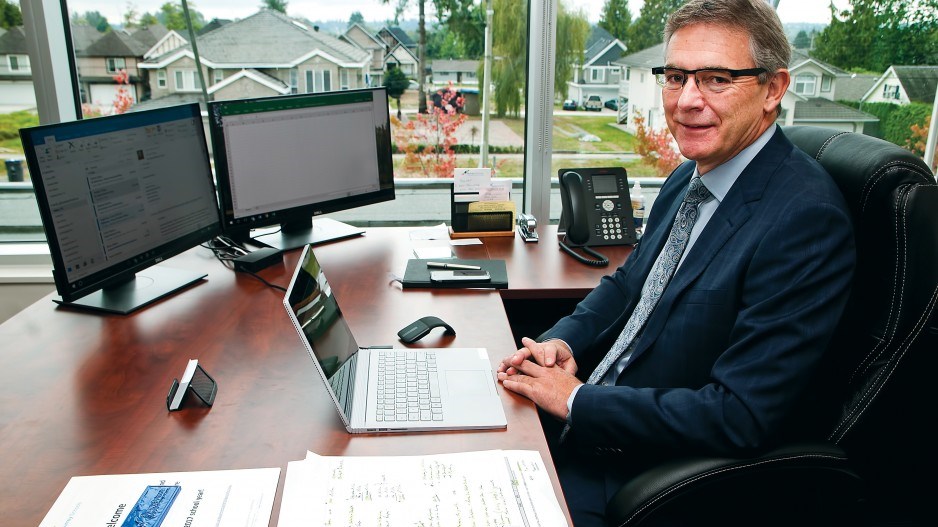As the Surrey School District works to keep up with a booming student population, the district’s secretary-treasurer Greg Frank has an analogy as to how it approaches the challenge.
“We’re in the business of education,” Frank said. “We are a $700 million business – that’s a massive business.”
The school district has reached a critical point. Frank said it has about 7,000 students in portable classrooms and the area’s catchment is growing by 1,000 to 1,200 students a year. Various factions of the community have called for a halt to residential development so the district can catch up, but Mayor Linda Hepner ruled that out. While real estate has cooled the past few months across the Fraser Valley Real Estate Board’s jurisdiction, back in March its sales count was the highest since the organization’s inception in 1921.
In May the provincial government announced funding for up to 2,700 new student spaces across School District 36. The announcement included approximately $100 million to fund six projects in Surrey, including expansions at Sullivan, Woodward Hill and Panorama Park elementaries and work to provide 1,500 additional seats at Grandview Heights secondary, expected to start next year.
“Once again we will be challenged trying to place and find spots for all the new students but we’re off to a great start,” said Frank who spoke to Business in Vancouver during the first week of the fall school year.
Frank said the district is hoping to submit a five-year capital plan by the end of September, and noted it is managing around $150 million of capital expenditures in the early planning phase of development.
“When you’re spending $150 million, that’s a lot of jobs for a lot of people and it’s across many, many sectors,” he said.
With the largest student enrolment base in the province, the Surrey School District has had rapid growth over the last decade. It has 101 elementary schools, 19 secondary schools, five student learning centres, three adult-education centres, an online learning program and a variety of satellite and inter-agency programs. This works out to about 71,000 students for the 2016-17 school year, spread across 328 square kilometres.
Since 2001, student enrolment in the district has risen 18%, from 58,648 students to an estimated 69,446 in 2015-16. During that time the government has invested approximately $337 million into 55 capital and seismic-upgrade projects, including 12 site acquisitions across the city.
Frank noted that as one of the city’s largest employers, the district has approximately 10,000 employees. Sixty per cent of them live and work in the city.
“Ninety per cent of our operating budget goes to salaries and benefits for our employees,” he said.
Anita Huberman, chief executive officer of the Surrey Board of Trade, said it’s important to acknowledge that the school district is contending with a less-than-ideal situation, but added that the economic spinoff from rapid expansion to meet growing enrolment is good for the city.
“Though there are significant challenges to our overcrowded schools, businesses benefit from a continued increased population,” Huberman said. “Developers, contractors, other employment opportunities are part of the mix in Surrey’s unique economic paradigm.”




